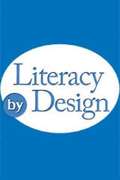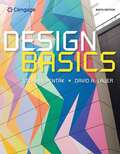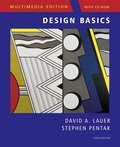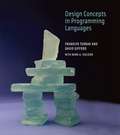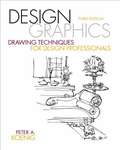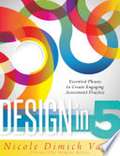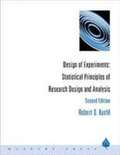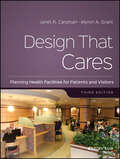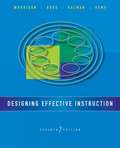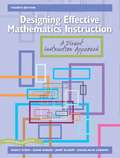- Table View
- List View
Descubrimientos de plantas (¡Arriba la Lectura!, Level P #71)
by Liz RayNIMAC-sourced textbook. ¿Por qué las plantas a veces crecen torcidas? ¿Cómo sabes si una planta necesita agua? Este libro contiene muchos experimentos divertidos. Si los haces, descubrirás todo sobre las plantas y aprenderás qué es el método científico. ¡Compruébalo tú mismo!
Desde el bosque: Una historia real de un suceso inolvidable (¡Arriba la Lectura!, Read Aloud Module 9 #3)
by Rebecca BondNIMAC-sourced textbook
Desenterrar el pasado (¡Arriba la Lectura!, Level U #49)
by Adam Ford Laura Sua¿Sabías que hay personas que viajan por el mundo desenterrando objetos del suelo para ganarse la vida? El arqueólogo Adam Ford explica en qué consiste su trabajo. Lee en qué lugares puede trabajar un arqueólogo y qué tipo de objetos puede encontrar. Y descubre que una casa común puede convertirse en una ruina arqueológica después de muchos años. NIMAC-sourced textbook
Deserts
by Madeline BoskeyThe fun and excitement of English and Language Arts learning continues in Grade 2 of Reading Street. This comprehensive and dynamic curriculum for homeschooling is geared toward young children who have some foundational English and Language Arts knowledge and are ready to strengthen their skills. Comprised of engaging activities, challenging content and weekly quizzes, Reading Street: Grade 2 is the next step in your child's path toward becoming a lifelong learner and reader. As with all Reading Street products, the Grade 2 system is formatted to help students meet certain age-appropriate goals. After completing this English and Language Arts homeschool program, your child should be able to: Read and comprehend two-syllable words. Identify common prefixes (such as pre-, un-, or re-) and suffixes (such as -able, -ad and -er). Correct mistakes made when reading out loud. Read books with two or more chapters. Understand the structure of stores (i. e. beginning, middle and end). Start selecting reading materials based on his/her own interests. Identify the "who," "what," "when," "where," "why" and "how" of the text. While the goals of second Grade English and Language Arts are numerous, Reading Street will help you craft engrossing lessons. Your child will garner important English and Language Arts skills while completing a workbook, reading stories and poems, and taking assessments. Planning these lessons will be easier than ever, as all Reading Street systems are broken down into weekly Big Ideas. All the work your child does on a given week is formulated around that single concept for an organized and challenging curriculum. With six easy-to-follow units, Reading Street: Grade 2 is the perfect tool for homeschooling parents. Your child will enjoy the reading selections and activities, and you'll love to see your student growing into a knowledgeable individual. We're confident that this product is the right one for you. For more information on the specific materials found in Grade 2 of Reading Street, check out the Features and Benefits page.
El desierto (¡Arriba la Lectura!, Level A #15)
by Joanne HardestyNIMAC-sourced textbook. ¿Qué hay en un desierto? ¡Vamos a ver!
Design Basics
by Stephen Pentak David A. LauerFilled with hundreds of stunning examples of successful two-dimensional design, this how-to book explains design theory and gives students the tools needed to create successful designs. DESIGN BASICS presents art fundamentals concepts in full two- to four-page spreads, making the text practical and easy for students to refer to while they work.
Design Basics, Multimedia Edition (6th edition)
by David A. Lauer Stephen PentakThe book presents art fundamentals concepts in full two-to four-page spreads, making the text practical and easy for students to refer to while they work and gives instructors the utmost flexibility in organizing the course. Visual examples from many periods, peoples, and cultures are provided for all elements and principles of design, and the diversity of illustrations includes more examples from nature and non-art sources, encouraging students to see these principles in the world around them.
Design Concepts in Programming Languages
by Franklyn Turbak David Gifford Mark A. SheldonChoice Outstanding Academic Title, 2009. Hundreds of programming languages are in use today--scripting languages for Internet commerce, user interface programming tools, spreadsheet macros, page format specification languages, and many others. Designing a programming language is a metaprogramming activity that bears certain similarities to programming in a regular language, with clarity and simplicity even more important than in ordinary programming. This comprehensive text uses a simple and concise framework to teach key ideas in programming language design and implementation. The book's unique approach is based on a family of syntactically simple pedagogical languages that allow students to explore programming language concepts systematically. It takes as its premise and starting point the idea that when language behaviors become incredibly complex, the description of the behaviors must be incredibly simple. The book presents a set of tools (a mathematical metalanguage, abstract syntax, operational and denotational semantics) and uses it to explore a comprehensive set of programming language design dimensions, including dynamic semantics (naming, state, control, data), static semantics (types, type reconstruction, polymporphism, effects), and pragmatics (compilation, garbage collection). The many examples and exercises offer students opportunities to apply the foundational ideas explained in the text. Specialized topics and code that implements many of the algorithms and compilation methods in the book can be found on the book's Web site, along with such additional material as a section on concurrency and proofs of the theorems in the text. The book is suitable as a text for an introductory graduate or advanced undergraduate programming languages course; it can also serve as a reference for researchers and practitioners.
Design for Maximum Impact (Into Reading, Level V #81)
by Sharon ParsonsNIMAC-sourced textbook. When you hear the word "design," you might think of a pattern on clothes, or maybe a certain kind of drawing. But it's actually much more than that. Good design is a blending of colors, shapes, and images put together to grab our eyes' attention. It goes into everything we buy and use. What type of "design" makes you stop and say "wow!"?
Design Graphics: Drawing Techniques For Design Professionals
by Peter KoenigDesign Graphics: Drawing Techniques for Design Professionals , Third Edition, combines–in a single volume–simple techniques and skills related to sketching, design-development, and the schematic or preliminary phase of design presentation. Emphasizing drawing as a mental as well as physical exercise, the text helps students draw designs on paper faster and easier, showing them how visual communication with clients can provide better, more economical design solutions. Practical, straightforward, and reader-friendly, Design Graphics provides more complete coverage of the basics, making concepts and techniques accessible to students with highly diversified educational and technical backgrounds.
Design In Five: Essential Phases To Create Engaging Assessment Practice
by Nicole Dimich VagleFully engage learners in your classroom. Discover how to create high-quality assessments using a five-phase design protocol. Explore types and traits of quality assessment, and learn how to develop assessments that are innovative, effective, and engaging. Evaluate whether your current assessments meet the design criteria, and discover how to use this process collaboratively with your team.
Design of Experiments: Statistical Principles of Research Design and Analysis (2nd Edition)
by Robert O. KuehlThis edition prepares students to design and analyze experiments that will help them succeed in the real world. The author uses a large array of real data sets from a broad spectrum of scientific and technological fields. He emphasizes the importance of developing a treatment design based on a research hypothesis as an initial step, then developing an experimental or observational study design that facilitates efficient data collection.
Design That Cares: Planning Health Facilities for Patients and Visitors (Third Edition)
by Myron A. Grant Janet R. CarpmanDesign That Cares: Planning Health Facilities for Patients and Visitors, 3rd Edition is the award-winning, essential textbook and guide for understanding and achieving customer-focused, evidence-based health care design excellence. This updated third edition includes new information about how all aspects of health facility design - site planning, architecture, interiors, product design, graphic design, and others - can meet the needs and reflect the preferences of customers: patients, family and visitors, as well as staff. The book takes readers on a journey through a typical health facility and discusses, in detail, at each stop along the way, how design can demonstrate care both for and about patients and visitors. Design that Cares provides the definitive roadmap to improving customer experience by design.
Designing Effective Instruction
by Gary R. Morrison Steven M. Ross Jerrold E. Kemp Howard K. KalmanThis book includes many new, enhanced features and content. Overall, the text integrates two success stories of practicing instructional designers with a focus on the process of instructional design. The text includes stories of a relatively new designer and another with eight to ten years of experience, weaving their scenarios into the chapter narrative. Throughout the book, there are updated citations, content, and information, as well as more discussions on learning styles, examples of cognitive procedure, and explanations on sequencing from cognitive load theory.
Designing Effective Mathematics Instruction: A Direct Instruction Approach
by Marcy Stein Diane B. Kinder Jerry Silbert Douglas W. CarnineFor courses in Mathematics in Special Education. Providing teachers with the information needed to design supplemental mathematics instruction and to evaluate and modify commercially developed math programs, Designing Effective Mathematics Instruction, Fourth Edition, gives teachers systematic procedures and teaching strategies to augment instruction. The new edition discusses the history and components of the direct instruction approach to teaching mathematics, as well as relevant and current research skills and techniques required for effective mathematics instruction, including strategies for pacing lessons, correcting errors, and diagnosing and remedying error patterns. Designing Effective Mathematics Instruction also contains Instructional Sequence and Assessment Charts for primary, intermediate, and remedial teachers, which serve as diagnostic tests or as a basis for constructing goals and objectives for students.


